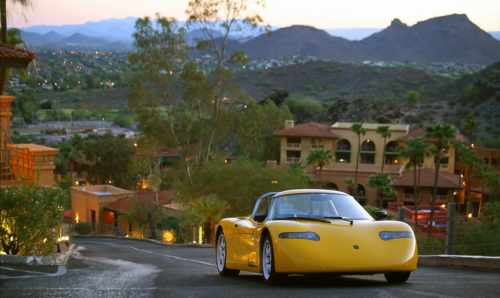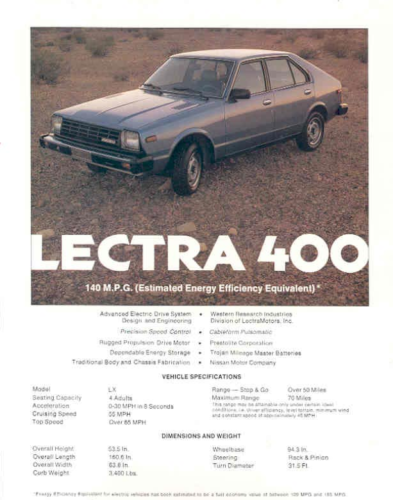Crashed and dead Tesla owners seems like the worst possible route just to get EV parts prices down from 1997 to 2022. Yet here we are.
In 2006 Tesla licensed 1997 electric vehicle (EV) engineering from an LA company that in 2003 had demonstrated 0-60 mph in under 4 seconds with a 300 mile range.

It’s now the end of 2022 and what Tesla basically has achieved since then, aside from killing so many people unnecessarily, is the collapse of EV performance parts prices.
Early on I remember junkyards telling me that Tesla liked to “total” any vehicle even in minor collisions. That got the attention of engineers who knew the value of an abandoned tzero wolf under Tesla sheep paneling.
In one 2016 chop shop in Oakland the operator showed me how he’d buy crashed Teslas at $20k, put $10-20k into them and sell for upwards of $90k to buyers all over the world.
We ended up taking one of his private label rides out to test how easily we could force the Tesla computers into confusion, or even target one into crashing. (It was easy, far too easy).
Fast forward (pun not intended) and a LOT of Teslas have been crashing, leaving their 1997 tzero race car designs and debris scattered throughout junkyards.
Who needs an EV doing 0-60 mph in under 4 seconds? Especially who needs that bundled by a car company known for critical design flaws, such as unintended acceleration and brake failures?

Thank AC Propulsion engineers in the 1990s for their contribution to electric muscle, but then ask whether so many dead Tesla owners was the best way to “donate” EV parts into the eager hands of muscle car builders.
Erickson, whose renamed ”Electrollite” accelerates to 0-60 mph in three seconds… invites curious stares at public charging stations… At the end of 2019, Erickson, a cargo pilot, bought the [1972 Plymouth Satellite] for $6,500. He then embarked on a year-and-a-half-long project to convert the car into a 636-horsepower electric vehicle (475 kW), using battery packs, a motor and the entire rear subframe from a crashed Tesla Model S.
And here again:
Sean Moudry, who co-owns Inspire EV, a small conversion business, recently modified a 1965 Ford Mustang that was destined for the landfill. […] Trying to pack enough power into the pony car to “smoke the tires off of it” at a drag strip, Moudry and his partners replaced the underpowered six-cylinder gas engine with a motor from a crashed Tesla Model S.
It’s like anyone who really understands cars and wants a fast EV takes the tzero concepts and puts them into anything other than a Tesla.
More to the point, the hot rod industry is shifting away from picking through crashed 1990s concepts hidden under a cheesy Tesla badge. Hot rodders are back into actual modern innovations like we saw in the late 1940s and again 1970s (periods of energy instability).
“The early adopters of this would take a crashed Tesla and pull the motor and harnesses and batteries and all that out of the vehicle and find a way to shoehorn it into whatever vehicle they wanted to build,” Spagnola said. “But today there are many manufacturers now starting to make components. … We’re really excited about it.”
They talk about a crashed Tesla like there is no other source. That’s very problematic for many reasons. Nissan, for example, has 600K vehicles using its “driver assist” technology, and totally dominated the EV market, yet has reported zero crashes though this year.
Zero crashes.
You’d think the headlines would be all over Nissan’s success, and EV conversions would seek out Nissan. Or conversions would seek out Chevrolet.

But even worse, American car and oil companies had conspired with the government to prevent electric technology from being repurposed before the 2000s, even buying out successful EV startups just to make a secondary product market disappear.
No joke, engineers in Nevada working on things like nuclear waste and the mind-bendingly advanced Blackbird SR-71 plane had started an EV company that in 1980 looked ready to revolutionize the American car industry.
Retired electrical engineer Al Sawyer in 1979 founded a company that started to easily fly past requirements set by the government. He transitioned from building electric robots to handle military nuclear waste to crushing performance milestones in a production EV.
GM boasted then that the EV would be going into widespread deployment by 1985.
Ronald Reagan killed all that American innovation so hard I never find anyone who remembers the awesome 1980 Lektrikar II based on a… Nissan.

Talking about the 2000s tzero fate is thus kind of a sad 30 year cycle, rising out of the ashes of politically dangerous post-war 1940s and 1970s EV engineering.

With a big nod to Reagan’s dumb 1980s legacy, the American EV market was deliberately killed again in 2003 by President Bush.
The third EV market collapse driven by oilmen was different however, as we all know now, because a small group of individuals begged for government handouts to mass produce tzero’s EV muscle under a Tesla badge: dangerously fraudulent marketing claims about safety, self-driving, and environmentalism.
Tesla delivered the exact opposite of its three main claims, but government backers haven’t held it accountable and its failures have in meantime lowered EV parts prices.
In fact, as California started to talk real accountability and safety, Tesla ironically ran away to oil-centric Texas as if Enron never happened.
All that being said, it seems like the shadow of President Bush’s 2002 hard anti-EV campaigning (paid for by GM, Ford and big oil) finally is starting to disappear.
A lot of basic EV truths have been proven despite misrepresentation and heavy propaganda costs that deservedly dog Tesla.
If only AC Propulsion had been able to release its products through the 2000s under government subsidized contracts direct to race tracks and hot rodders (perhaps even through real upstart car companies like Nissan, Fiat and Kia).

As a final note, someone looking for real production EV muscle still probably wouldn’t want the death-trap Tesla. All the crashes likely are coming from people who don’t understand what they’re getting themselves into.
The Lucid Air Sapphire, for contrast, is for EV muscle enthusiasts: rates 0-60 mph in less than two seconds. Its 0-100 mph takes less than four seconds, with a standing quarter mile incredibly under nine seconds.
Lucid recently set a production car world record by posting a 9.1 second quarter mile, clearly leaving Tesla’s best attempts (an embarrassment to the word production) in its dust. It’s not just that Lucid looks far better and performs far better than Tesla, it’s a logical progression after AC Propulsion: started by real engineers who respect real engineering, which includes an ethical duty to do no harm.
RIP Lektrikar.
